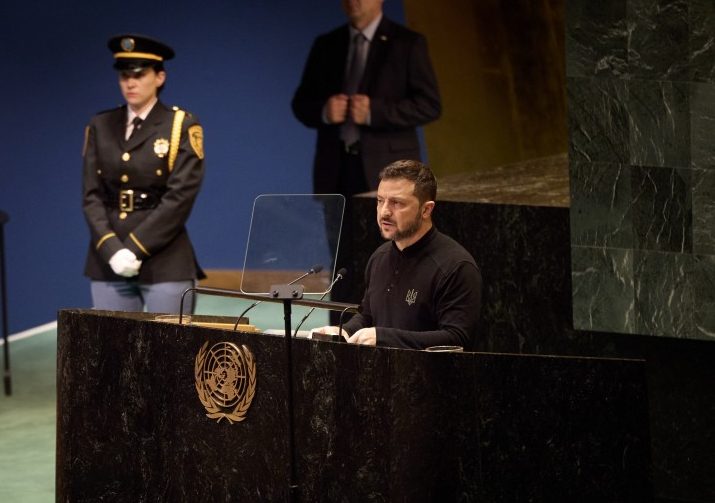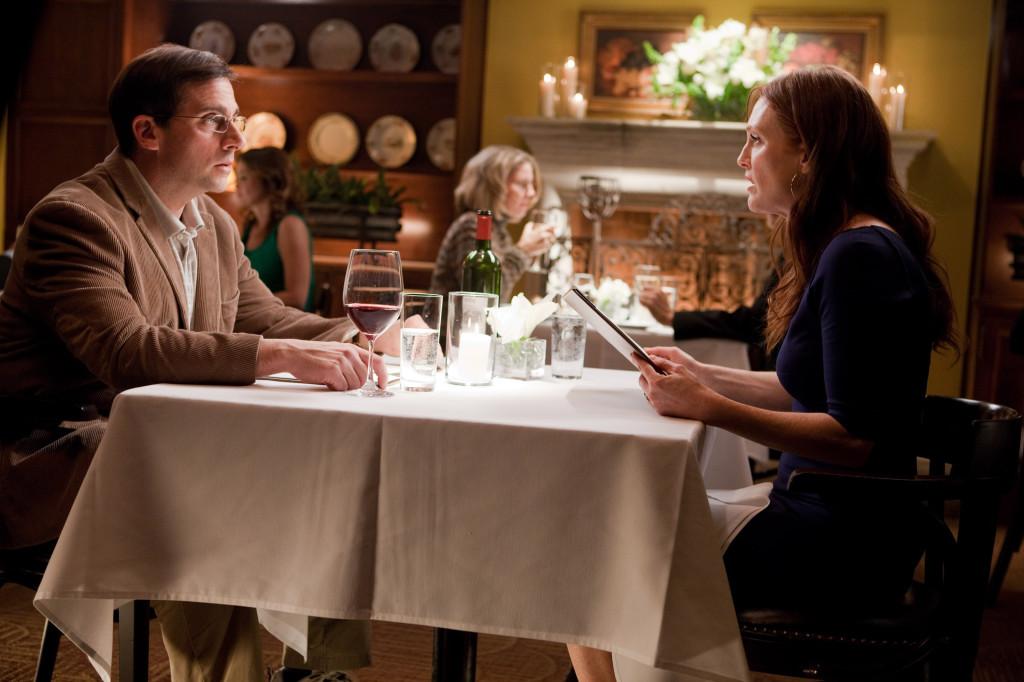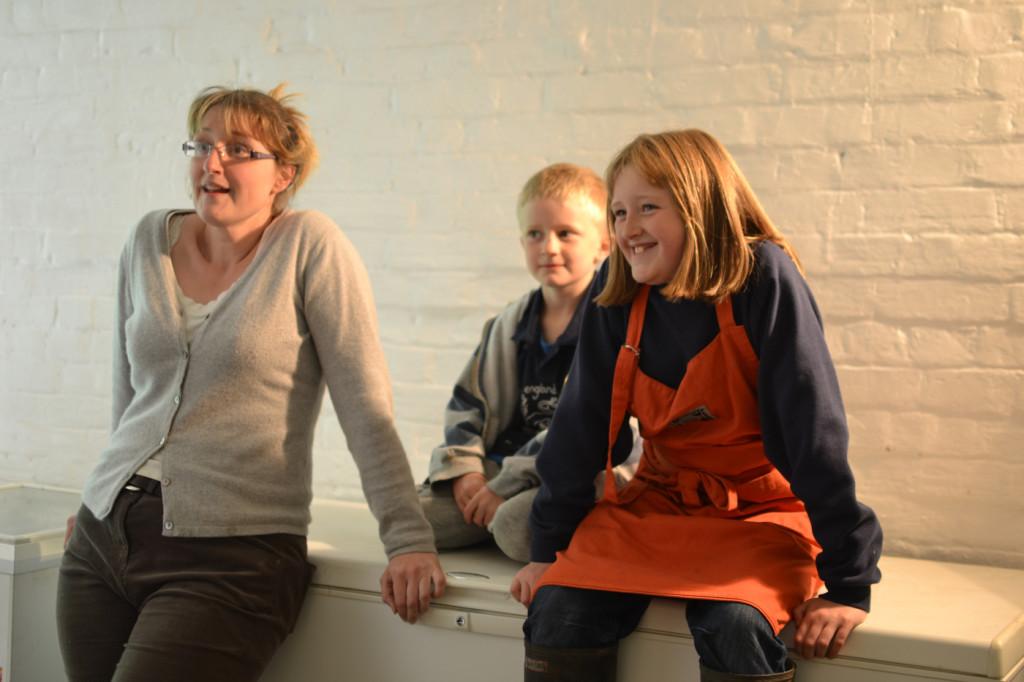“If you want to see the heart [of Venice], visit the church,” Esposito Felix said. “Great art, you can see in the church. There, you can appreciate the culture.” A street painter selling his work amidst the throngs of tourists along the Canal Grande, Felix is one of many of the local artists who was born and raised in the culture of Venetian art.
Another native artist, Franco, also used to be a street painter but now owns an art gallery called Mazzucchi. Sitting with his daughter Sara as he paints a watercolor piece, Franco explains that he enjoys art because it allows him to “express [himself].” He, like many other Venetian artists, found it difficult to articulate in words why he chose that profession, even though he has been a painter for 40 years.
Cinzia, another Venetian, strings glass beads on a necklace at the counter of Paropàmiso, a European and Oriental antique jewelry store. Working on jewelry for 12 years, she has a substantial amount of experience in the field, but her store traces the origins of art back through history to famous figures like Marco Polo.
Because Venice is an entrepôt for foreign exchange, local art incorporates different elements of art from various parts of the world. Traveling to faraway places like India, China, and Japan, Cinzia and her friend stock the store with antique ornaments and jewelry that reflect Venice’s past status as a major trading post influenced by the culture brought by Eastern merchants.
“Venice is one of the most famous historic towns in the world,” Cinzia said. “I like the history in old things because we have […] everything antique.”
Max Art Shop, founded by Antonia Sautter in 1984, describes itself as “a meeting point of the finest artisan-artists who truly take their inspiration from Venetian tradition” and “continue to express the flavour of the Venice of Old.”
Davide Desanzuane, owner of the leather-binding store Pagine e Cuoio, has been in the leather-crafting business for six years.
“My grandfather taught me,” Desanzuane said, emphasizing the importance of craftsmanship in the family. He did not hesitate to explain the process of his craft, using materials from local vendors.
In another shop frequented by many passing tourists, Perez Sebastiano forms an elephant out of the molten glass between his tools. Using a flame torch in the back of the store, he creates a herd of minute black elephants. Next to him, his wife explains the workings of the family-run store as she attaches wire hooks to glass earrings.
Attombri is a pricier store that caters to tourists looking for more than just kitschy souvenirs. Using coiled wires and 75 to 80-year-old pieces of fine Murano glass, two brothers create the assortment of jewelry that is sold at three Attombri locations in Venice.
Drawing influence from the rich history of Venice, artists find inspiration for their respective crafts.


















![“[Building nerf blasters] became this outlet of creativity for me that hasn't been matched by anything else. The process [of] making a build complete to your desire is such a painstakingly difficult process, but I've had to learn from [the skills needed from] soldering to proper painting. There's so many different options for everything, if you think about it, it exists. The best part is [that] if it doesn't exist, you can build it yourself," Ishaan Parate said.](https://harkeraquila.com/wp-content/uploads/2022/08/DSC_8149-900x604.jpg)




![“When I came into high school, I was ready to be a follower. But DECA was a game changer for me. It helped me overcome my fear of public speaking, and it's played such a major role in who I've become today. To be able to successfully lead a chapter of 150 students, an officer team and be one of the upperclassmen I once really admired is something I'm [really] proud of,” Anvitha Tummala ('21) said.](https://harkeraquila.com/wp-content/uploads/2021/07/Screen-Shot-2021-07-25-at-9.50.05-AM-900x594.png)







![“I think getting up in the morning and having a sense of purpose [is exciting]. I think without a certain amount of drive, life is kind of obsolete and mundane, and I think having that every single day is what makes each day unique and kind of makes life exciting,” Neymika Jain (12) said.](https://harkeraquila.com/wp-content/uploads/2017/06/Screen-Shot-2017-06-03-at-4.54.16-PM.png)








![“My slogan is ‘slow feet, don’t eat, and I’m hungry.’ You need to run fast to get where you are–you aren't going to get those championships if you aren't fast,” Angel Cervantes (12) said. “I want to do well in school on my tests and in track and win championships for my team. I live by that, [and] I can do that anywhere: in the classroom or on the field.”](https://harkeraquila.com/wp-content/uploads/2018/06/DSC5146-900x601.jpg)
![“[Volleyball has] taught me how to fall correctly, and another thing it taught is that you don’t have to be the best at something to be good at it. If you just hit the ball in a smart way, then it still scores points and you’re good at it. You could be a background player and still make a much bigger impact on the team than you would think,” Anya Gert (’20) said.](https://harkeraquila.com/wp-content/uploads/2020/06/AnnaGert_JinTuan_HoHPhotoEdited-600x900.jpeg)

![“I'm not nearly there yet, but [my confidence has] definitely been getting better since I was pretty shy and timid coming into Harker my freshman year. I know that there's a lot of people that are really confident in what they do, and I really admire them. Everyone's so driven and that has really pushed me to kind of try to find my own place in high school and be more confident,” Alyssa Huang (’20) said.](https://harkeraquila.com/wp-content/uploads/2020/06/AlyssaHuang_EmilyChen_HoHPhoto-900x749.jpeg)















